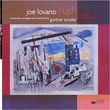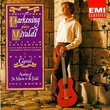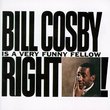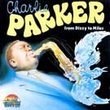| All Artists: Pierre Boulez, Paavali Jumppanen Title: Boulez: The Three Piano Sonatas Members Wishing: 0 Total Copies: 0 Label: Deutsche Grammophon Release Date: 2/8/2005 Genre: Classical Styles: Chamber Music, Forms & Genres, Sonatas, Historical Periods, Classical (c.1770-1830), Modern, 20th, & 21st Century Number of Discs: 1 SwapaCD Credits: 1 UPC: 028947753285 |
Search - Pierre Boulez, Paavali Jumppanen :: Boulez: The Three Piano Sonatas
 | Pierre Boulez, Paavali Jumppanen Boulez: The Three Piano Sonatas Genre: Classical
Boulez the composer isn't for everyone, his music's appeal often confined to avant-garde enthusiasts and to those nostalgic for the days when serialism was the dominant style. But many of his works are accessible to the op... more » |
Larger Image |
CD DetailsSynopsis
Amazon.com Boulez the composer isn't for everyone, his music's appeal often confined to avant-garde enthusiasts and to those nostalgic for the days when serialism was the dominant style. But many of his works are accessible to the open-minded willing to meet him on his own ground, which is to say that melody, tonal allure and easily understandable structure are not part of a musical vocabulary that seeks to create new forms while detonating old ones. The first two piano sonatas were written when Boulez was a musical revolutionary in his early twenties; yet the results are polished and stimulating. Jumppanen, a young Finn handpicked by Boulez to record this disc, is completely idiomatic, with the technique to do justice to these works. Pollini may reign unchallenged in the Sonata No. 2 and Idel Biret's fine recording of all three works on Naxos is budget priced, tempting novices to give them a hearing. But having all three sonatas easily available in such fine performances makes this disc a must for Boulez's admirers. --Dan Davis Similarly Requested CDs
|
CD ReviewsGreat Third,and First; less so Second scarecrow | Chicago, Illinois United States | 03/12/2005 (5 out of 5 stars) "The 'Second Sonata' of Boulez seems to get everyone confused,or stymied,afraid of its "abyss" it was his most violent gratuitous and brutal work, most exposed to the extremities of its own timbre. Pollini plays it like an automaton coldly,like he's a "phanthom" playing and not there, only Yvonne Loriod comprehends the times,the gestures of this piece if you contemplate it as a document certainly the Occupation of Paris in WW2 had some effect/affect on the young Pierre,riding the Metro with Messiaen and that culture was undergoing some form of demise or the transgressive. His icons were of course those in literature;Rene Char and Mallarme who he really did not know well enough in the mid Forties to utilize in a work's concept, but certainly the theatre of cruelty of Artaud and much later the chiseled word games(plays) of Beckett. Loriod brings this incredible sense of endlessness to the timbre,abandoned to the narrative and deeply resonant, ringing continuously seemingly,and the premise of the work is "transgression" of the intervallic materials. The concept of the Sonata was chosen only to disintegrate its architecture; Jumppanen doesn't get this fully he was very timid,tenuous, and he seldom "took off"where tones became "noises" exceedingly polite at times; you never sense the timbral extremities of the work, that "other" realm that Boulez was interested in and continued to be with subsequent works. The first movement rhythmic cells,D-A-D#-G#,C# F-G should be charged with high combustible energy where the phrases foment and accrete toward greater crashes,"bottlenecks" of violence. The work should be thought through in this way, for then the relative calms within the four movements as the second movement is should not be too too calm and restained needlessly.The "surreal-like" second movement should be suggestive, not simply sustained intervals without direction. I felt this a bit. There is no momentum at all then so the work simply dissipates into an anti-aesthetic of nothingness. These timid sensibilities gently skills however work quite well in the "First Sonata", Jumppanen goes for the discreetly beautiful,the sustained the tinckle of the opening,F#-D,F-Eb-E these threadbare exposed materials are gently compelling, then the more noise like arpeggiations are really interruptions of this beauty.Aimard you may find somewhere in between where he never sacrifices the overall brutal premise of the work's aesthetic. But then we get to Jumppanen and the 'Third Sonata', the mobile indeterminisms at work, work quite well. This now is a real piece of modernity,with a high conceptual premise, with exposed lines that can only depend upon themselves not an on=going intervallic narrative,or accreting contrasting movements, as we found in the other two Sonatas. Here each anti-movement (not movements for nothing really moves anywheres) but gestures, points, moments depend upon themselves, and in the 'Formant 3' the alternating contrasts of 'Points' to 'Blocs' is indeed engaging. You fall in with the 'Blocs' movements the more brutal suspended gestures,greater richness of piano timbre,with harmonics to "trail" the gesture into the next to the more threadbare private single tones in the 'Points'.There are also a wider pallette of timbre in the 'Third Sonata' here with a differing array of attacks to the piano keys, the use of all three pedals and harmonics, where you silently depressed tones then striking others to produce an eeery resonance, that really is barely auduble on this recoding and in a concert hall perhaps not at all.Jumppanen is wonderful here in the Third with a detached demeanor simply allowing the piece to fall off, and he seems much more willing to engage now the more brutal moments." Not Boulez at his recent greatest, but technically inventive Christopher Culver | 08/02/2006 (4 out of 5 stars) "Pierre Boulez's three piano sonatas are early works indeed. The first two were written in his early 20s, while the third came not long after. Here the young Finnish pianist Paavali Jumppanen gives a reading which, if not outright called definitive by the composer, still seems to carry his approval.
Even for those familiar with much serial music, even if you've heard everything else Boulez composed, the piano sonatas can be difficult listening. In fact, in the beginning one might think it merely a series of bleeps and bloops without order. Gaining insight into these takes time, and in the beginning one should focus on the simple succession of individual gestures even if the musical development on a large scale can't be perceived. Over time, however, the sonatas unlock their secrets, and one begins to notice motifs and clever form. The first two sonatas are not Boulez's first pieces--they were preceded by the recently rehabilitated "Notations" for piano (1945)--but they are Boulez's first individual achievement. In the "Piano Sonata No. 1" (1946) the sonorities of Webern (especially the "Symphonie" op. 21), coexist with an interest in dynamic and attack which is pure Boulez. The first movement is developed out of merely four opening gestures: a rising minor sixth, an appoggiatura, an isolated note, and a brusqe arpeggio. The second movement opens with cells all over the keyboard, and the dashing between octaves hints at Boulez's later solo piano work "Incises". For much of his career has sought to take serialism beyond mere miniatures, like Webern, to grand designs. The four-movement "Piano Sonata No. 2" (1948) is, at nearly a half an hour long, an important venture in this direction. Popular opinions about Boulez as entirely detached from tradition will be amazed at the work's clear debt to Beethoven's "Hammerklavier" and "Waldstein" sonatas, and it even uses a B-A-C-H motif throughout. Its first movement is marked "extremement vif"--right off we find a violence and virtuosity never before heard in Boulez--and it posseses the elegant dramatic arc of classical sonata form, exposition--development--recapitulation. The second, slow movement is lyrical and melodic, while the brief (three-minute) third minute combines variation and scherzo form. The fourth movement, however, is extremely rich, made up of an introduction, a fugue, a rondo, and a coda. A twelve-tone fugue makes for exciting listening. The "Piano Sonata No. 3" (1955-57) was written during Boulez's interest in quasi-aleatoric writing where the performer was free to decide the order of the piece's sections. Inspired by Mallarme and the possibility of a book in perpetual expansion, this quality can be found also in Boulez's "Eclat" and "Pli selon pli", though Boulez ultimately fixed the ordering of the latter. This sonata has remained uncompleted for almost fifty years, and of the five "formants" (not "movements", since they don't move forward) which are to make up the piece, only the second and third have been published. The Third Sonata is by far the most abstract of the three, and understanding its structure involves close listening, ideally with score at hand. While based on an interesting concept, it offers fewer possibilities for mere entertainment than the first two. I'm loathe to criticize Jumppanen's performance, since Boulez sure thinks highly of it. So far I've only heard the recordings with Jumppanen and Idil Biret (on Naxos), and while the lighter touch of Biret is good listening, she flubs a few parts of the second that Jumppanen handles flawlessly. Jumppanen's use of pedal is much heavier, but it seems in keeping with the score. This recording has fine liner notes by Paul Griffiths, but for best understanding the sonatas I'd recommend getting a copy of Dominique Jameux's PIERRE BOULEZ (English translation Harvard University Press, 1991 ISBN 0-674-66740-9). For me, Boulez really hit his stride after "Eclat", when he produced a number of works full of brilliant colour and elegant construction such as "Sur Incises", "...explosante-fixe..." and "Repons". I'd recommend those first to anyone curious about Boulez's music. Still, the piano sonatas are an interesting step in Boulez's musical development, as well as some of the most rigorous and adventurous serial writing of the generation after the Second Viennese School." |

 Track Listings (16) - Disc #1
Track Listings (16) - Disc #1





